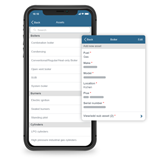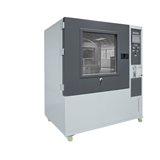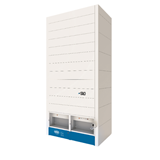National Instruments (NI), the US-based measurement and automation company, has teamed up with key customers to produce its 2011 Automated Test Outlook.
The company claims: "the biggest challenges for test engineers and managers is staying current on technology trends", and the report intends to bring readers up-to-date.
NI has sub-divided the report into four areas: Organisational Test Integration, System Software Stack, Heterogeneous Computing and "IP to the Pin".
In the first section, the report looks at progressive companies that have eschewed the traditional practice of separating the teams that look after test validation and test in the production environment in order to integrate the groups.
"Test managers seeking to decrease time to market and reduce test costs see that improving teams independently is providing diminishing returns," NI’s report noted.
The future will be one whereby: "production test teams are forced to embed themselves in the product development process. Similarly, validation test teams [will spend] increasingly more time debugging designs using production test systems on the manufacturing floor".
NI’s customers say that test software costs are often two- to ten-times greater than capital costs in most test systems today. This cost bias is reflected in the make-up of many test engineering organisations’ teams which tend to comprise more software engineers than hardware engineers.
The report suggests that companies: "emphasise designing a robust system software stack to ensure maximum longevity and reuse of their software investments," and additionally, "[companies] are seeking modular software stacks in the form of separate yet tightly integrated elements for test management software, application software and driver software".
On trends in heterogeneous computing, the report says test systems are generating an unprecedented amount of data that can no longer be analysed using a single processing unit. It claims that to address these needs, engineers have to turn to heterogeneous computing architectures.
According to NI: "[the best solution] is a system that distributes data, processing and program execution among different computing nodes that are each best suited to specific computational tasks".
Finally, the report focuses on a topic entitled "IP to the Pin". NI says the Holy Grail for the electronics industry - concurrent design and test – appears to be an unattainable goal because the design side uses innovative EDA tools while progress in the test sector has stalled.
"The consequence is that test engineers are typically outmatched when testing the latest software-centric electronic devices," the company said in the report.
The solution, claims NI, is to deploy design building blocks, known as intellectual property (IP) cores, to both the device-under-test (DUT) and the reconfigurable test instrument. This capability is called "IP to the pin" because it drives user-defined software IP as close to the I/O pins of next-generation reconfigurable instruments as possible.
"There are two key trends that will enable future reconfigurable test systems to deliver this IP-to-the-pin capability," the report said.
"The market shift toward FPGAs and the availability of high-level software to program them."
NI’s 2011 Automated Test Outlook can be downloaded from the company’s website.


-160x160-state_article-rel-cat.png)









-160x160-state_article-rel-cat.png)

-160x160-state_article-rel-cat.png)



-160x160-state_article-rel-cat.png)

